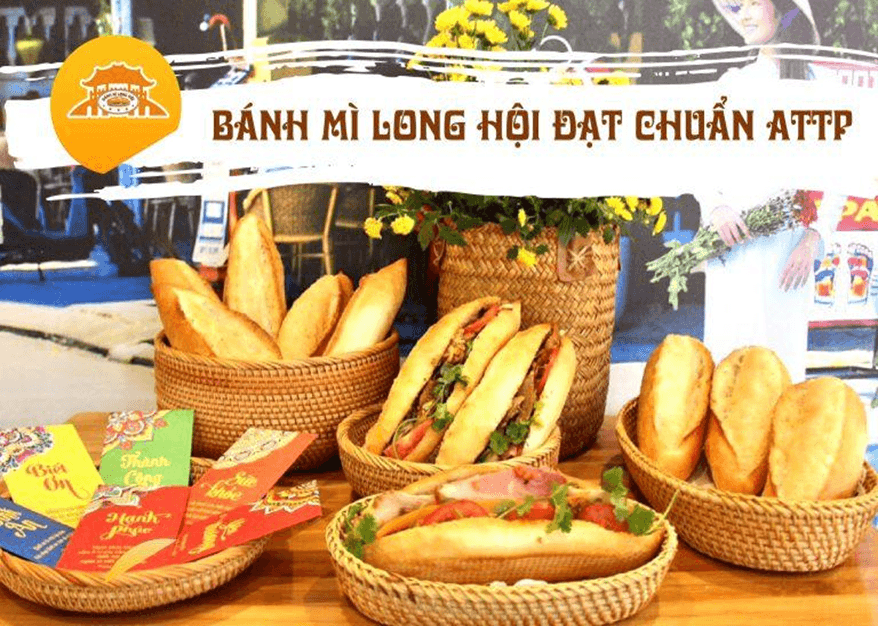The Best Banh Mi in Hoi An 2024
Each a valid contender for the best banh mi in Hoi An The hard question is if there is a best one? Between personal favourites, TripAdvisor reviews and celebrity recommendations, we put them to the test! In this guide, we give you an understanding of the revolutionary sandwich. As well as the best banh mi Hoi An stands, our favourites, and where to find them. There’s more than you think behind this snack.

Bánh mì Long Hội
French Occupation
Through the period of French occupation, the French adopted a poor pseudoscience. The belief that bread and meat made you strong, while the local diet of rice and fish made you weak. With this false idea, coupled with the high cost of wheat imported from Europe, bread was unattainable by the local people of Vietnam. Unless they were wealthy and powerful.
The introduction of rice flour during WWI
It wasn’t until WWI that shipments were disrupted. Needing to fill the gap for wheat, some bakeries began incorporating inexpensive rice flour into the recipe. The yielding result was a baguette that was fluffier and lighter with a thin crisp crust. Compared to its dense and chewy French counterpart.
Along with that, two of the leading import companies in Saigon were German-owned. Both seized by the authorities. With the French sailing off to war, large amounts of perishable goods were left behind in the once German warehouses. These goods then flooded the Vietnamese markets in Saigon and were affordable to the locals.
For once, the Vietnamese working class could afford cheese, pate, deli meats, bread, butter and condensed milk. However, bread still appeared as it always had. Accompanying a platter of cured meats and cheese, or in the form of a jambon-beurre. The only real local creation seen was a breakfast version for the Vietnamese. Called Bánh mì bơ—butter and sugar.
Birth of the best banh mi
The true birth of the best banh mi came about in 1954 in Saigon, after the French defeat at Dien Bien Phu. Up to this point, Vietnamese people could not alter the food of their colonialist masters. After the withdrawal of the French, the Vietnamese were free to customise the food using local ingredients. Tailoring the flavours to the local tongue and creating some of the best banh mi not only in Hoi An but across Vietnam.
Banh mi ingredients
The components that go into a banh mi vary from a wide assortment of items. Only restricted by one’s imagination. For this instance, we’ll be going through the fillings more commonly found if you’re walking up to a stand and ordering a banh mi. Some of the more established stands that are frequented by foreigners will have menus in English. But the majority do not. Just don’t let this list lead you into thinking there isn’t more out there in terms of combinations and variety.
Bread
The bread used in banh mi is a relative of the baguette from colonial times. It’s lighter and less chewy with a thin and crisp crust. Some may argue that it’s the most critical part of the sandwich, but it’s not. However, it does make a big difference in the result. The banh mi bread in Hoi An is by far the best compared to bread found elsewhere in Vietnam.
Pate
Chicken or, sometimes, duck livers are used in making this French spread. It adds a subtle flavour that is hard to pick out in the sandwich when you’re not looking for it—but the importance of this rich and savoury paste is paramount.
Mayo
Mayo is most commonly used, although margarine or butter can also be found. These are used to provide a richness in the sandwich and to protect the bread from moist ingredients and sauces.
Sauces
Most places will employ the use of one or more homemade sauces, oils or pastes to add moisture and flavour to the banh mi. At the very least, Maggi sauce will be used (usually found at smaller banh mi stands), which is a soy and vegetable protein based sauce from Switzerland.
Vegetables
Strips of cucumber are common, along with shredded pickled carrot and papaya or daikon. They provide the banh mi with a good layer of texture, while the pickled vegetables are a great way of adding some acidity to balance the richness of the fillings.
Herbs
The herbs help elevate the sandwich with wonderful floral and medicinal flavours. Coriander and Vietnamese mint are the most common.
